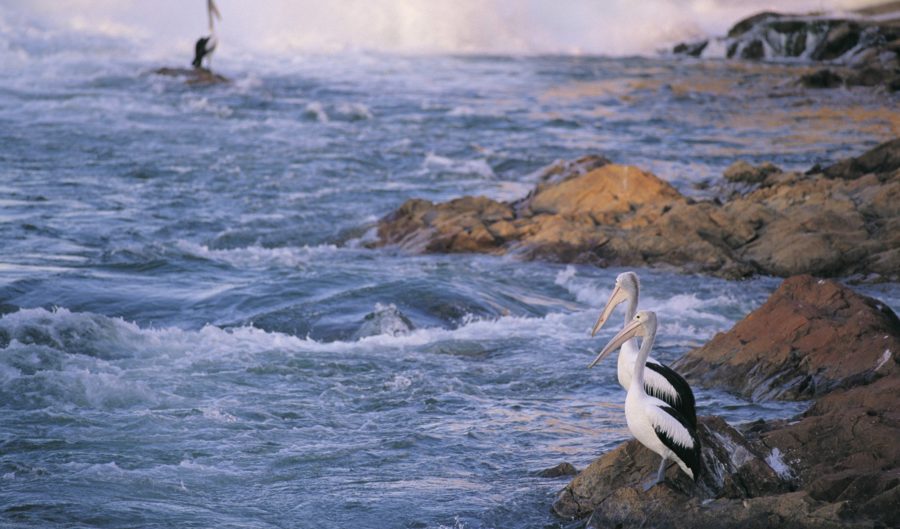7 things you definitely didn’t know about Aussie pelicans

MOST AUSTRALIANS choose to live close to the coastline, and so we’re used to sharing our space with the Australian pelican, often found perched on local wharfs.
But how much do we really know about these iconic Australians? A new book, Pelican, by Barbara Allen, reveals the lesser-known facts about these animals.
Here are seven things in Barbara’s new book that took us by surprise.
Australian pelicans have the longest bill in the avian world
The menacing bill of the Australian pelican is a world record setter.
The longest ever recorded bill size was a whopping 50cm, making it the longest bill in the bird world.
Pelicans use their incredibly lengthy bills to snap up food, and to impress prospective mates.
They also don’t mind using their snapping bill as a defence mechanism, as we all know.
The pelican in Finding Nemo is a lie
Remember Nigel from the Disney Pixar movie Finding Nemo? Well, even though the movie is set in Sydney waters, Nigel is a brown pelican, a North American bird.
The Australian pelican is almost entirely white, with just a bit of colour on the end of their wings, while brown pelicans feature a brown, red and grey mixture of colours across their body.
There’s also very little chance an Aussie pelican would have had mercy on a delicious fish in their mouth.
Pelicans are descendants of an ancient group of birds
The earliest-known pelican fossil, discovered in France, dates back 30 million years.
But what’s bizarre about this fossil is that a part of the animal’s skull, neck and almost the entire bill has been perfectly preserved.
The fossil also reveals that pelicans have stayed relatively the same over millions of years – the bill is around 30cm long, which is about average.
These animals are essentially living fossils.
New Zealand doesn’t have its own pelican species
Yes, the rivalry between Australia and New Zealand continues.
In the 1930s, a pelican fossil was discovered on New Zealand’s north island, and in 1966 it was officially named the New Zealand pelican.
It was a short-lived victory. In 1998, a palaeontologist determined that it was just an Australian pelican.
Pelicans don’t often embark on long migratory journeys, however, they have been known to cross the Tasman, settling themselves in New Zealand.
The last documented pelican to make this journey was recorded in 2012.
It’s not all bad news though. Percy the Australian pelican living at Wellington Zoo holds the record for the oldest living bird – 62 years of age.
Pelicans are prominent figures in Aboriginal Dreamtime
Like most Australian animals, the pelican is hailed as a sacred creature by Indigenous Australians.
The Wangkamura people of South Australia credit the pelican for the creation of opals and fire.
In another story, Goolay-Yali the pelican is credited with creating the very first effective fishing net.
The pelican and chihuahua myth
You read that correctly.
In 1984, a rumour circulated that a pelican had scooped up a chihuahua into its mouth because it was feasting on the pelican’s fish.
Well-known folklorists Bill Scott declared the story an urban myth, but there were more and more reports of similar incidents, with different localities and breed of dog. The story even made it on to the ABC news at the time.
Early colonisers predicted the end of the Australian pelican
In 1802, after exploring the islands of South Australia, famous British navigator Matthew Flinders wrote, ‘For the pelicans! Their golden age is past.’
Large animals like the pelican often don’t fare well under colonisation as they haven’t evolved to see humans as threats and are easy targets for hunting.
Even though their numbers would have certainly declined since colonisation, pelicans are still persisting in large numbers across the Australian coastline.
Pelican, AUD$24.99, NZD$29.99.

